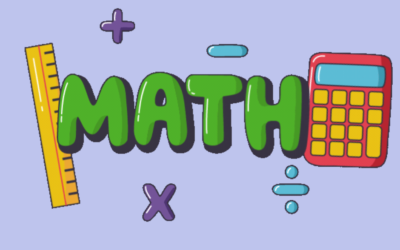A young filmmaker, Lauren, interviewed for our movie shared that she had trouble putting her ideas into words. After the camera had shut off, I told her that many people over the years shared exactly the same thing. Lauren shared that when she reads a book, she gets...
Free Visual and Hands-On Math Curriculum: Bridges
Recently, I discovered a free visual and hands-on math curriculum from The Math Learning Center, a non-profit organization that grew out of a National Science Foundation project. The curriculum is for Pre-K through 5th grade and it may be helpful as an addition to...
Visual Learning [Premium]
Two of the strongest differences seen in our survey of 12,291 members of our Dyslexic Advantage community were answers to questions below: LEARNING THROUGH PICTURES, DIAGRAMS, AND IMAGERY “I generally prefer diagrams or pictures to written instructions or explanations.” 70% of definitely dyslexic people strongly agreed with this first statement compared to just 7% of definitely not dyslexic people. And look at the different profiles in response to this question: “When I think of historical facts or events, I see “scenes” or images in my mind, rather than just recalling verbal descriptions. 64% of definitely dyslexic people strongly agreed with this statement, compared to just 8% of definitely not dyslexic people. Think about the implications for schooling, but also workplace communication! No wonder clashes are […]
The Power of the List [Premium]
For many of us, hearing about a new technology, app, or software can result in mixed feelings. We may have hope about better organizing and simplifying our lives, but also have reasonable worry about a difficult learning curve, a complicated interface, or any number of problems that can prevent us from reaping the benefits of whatever thing we are hoping might help. Enter – the simple list. If you have a weak short term or working memory, but great long-term memory and you don’t like reading lots of extra text, then lists may be the perfect productivity tool for you. Putting something down on a list can offload your working memory, but also have the benefits of reinforcing the big picture, while never losing sight […]
Julia’s Project : Boosting the Esteem of Elementary Kids with Dyslexia
As promised in the last newsletter, here's my interview with Julia de Montagnac of ColoringConfidence.com Julia shared her vivid memories of reading struggles in the 2nd and 3rd grades, and when the possibility of a service project came up, she wanted to interact with...
A Dyslexic’s Guide to Writing [Premium]
“We have so many tools to take care of the spelling, but not the tools to bring a fresh and new perspective to the world. Focus on your voice and your message, and the rest will follow.” — Tess Gadd Tess Gadd is an interface designer based in Cape Town who also writes a popular blog on Medium. She shared three strategies she uses to overcome challenges with writing. 1. PROOFREADING TOOLS “Enter Grammarly. I have been using the pro version for a year now, and it has made such a difference to my writing. Not only does it pick up mistakes, but it is also improves my ability to edit and proofread my own work.” 2. READING TOP TO BOTTOM AND BOTTOM TOP “When […]
Visualizing for a Living [Premium]
“My mind is very visual: I can see anything in pictures, and I always visualize things. I can’t help it. It’s how I’m wired. So whatever you talk about, I’ll see pictures in my head. Very vivid, colorful, lifelike pictures. They aren’t still pictures. I can make them move. Reality, fiction, whatever. I really have to pull it back in to get focused. It was also a problem in the classroom because I’d sit there and imagine where I’d want to be, and what I’d want to do, and what I wanted to become, and I’d think happy thoughts, and I’d just be tuned out the whole time in class.” — CEO Glenn Bailey When Brock and I were on a radio show years […]
Lip Reading and Dyslexia [Premium]
There is a long and diverse research history of dyslexia and documenting the auditory processing difficulties associated with dyslexia that hinder phonological awareness. It’s why dyslexic kids will struggle in school when everyone is required to wear a mask. The sounds are muffled, but also if the teacher is masked, then students cannot look at the teachers mouth – as an additional cue to what sound is being made. In a recent study published by Annals of Dyslexia, researchers made an interesting observation: “those children with dyslexia who are better readers attended more to the mouth while presented with a person’s face in a phonologically demanding condition.” More research needs to be done about this issue, be aware of helps like watching a video of […]
Visualization Pathway: Creative Discovery
The notion of creative visualization dates back at least from the time of ancient Rome when Cicero commented about his "mind's eye." Since that time, many of the world's greatest inventors and scientists, and writers and artists, athletes and entrepreneurs, have...
The Visual Poetry of Rebecca Kamen
Dyslexia: Beyond Decoding
If dyslexic students are struggling to decode words, a program of intensive structured literacy will help - but help with phonological awareness may not be sufficient to help them become fluent readers. Why? Because reading fluency, or the ability to read with...
Daydreaming While Reading [Premium]
“There are certain half-dreaming moods of mind in which we naturally steal away from noise and glare, and seek some quiet haunt where we may indulge our reveries and build our air castles undisturbed.” – Washington Irving Daydreaming holds a curious position in the areas of science. On the one hand, daydreaming has been seen as a negative, associated with inattention and poor task persistence, but on the other, associated with creative behavior and personal inspiration. Neuroscientists have taken a renewed interest in daydreaming because daydream pathways activate the default mode network, a brain network that is now known to be important for reflecting on one’s self as well as others, remembering the past, and imagining the future. Studies of dyslexic and non-dyslexic people […]

![Um.. Trouble Finding the Right Words [Premium]](https://www.dyslexicadvantage.org/wp-content/uploads/2023/12/Um.-Finding-the-Right-Words-400x250.jpg)

![Visual Learning [Premium]](https://www.dyslexicadvantage.org/wp-content/uploads/2023/01/visual-imagination-400x250.png)
![The Power of the List [Premium]](https://www.dyslexicadvantage.org/wp-content/uploads/2022/12/Power-of-List-Dyslexic-Advantage.jpg)

![A Dyslexic’s Guide to Writing [Premium]](https://www.dyslexicadvantage.org/wp-content/uploads/2022/06/Screenshot-Tess-Gadd-from-LinkedIn-299x250.png)
![Visualizing for a Living [Premium]](https://www.dyslexicadvantage.org/wp-content/uploads/2022/05/Visualizing-for-a-Living-Premium-400x250.jpg)
![Lip Reading and Dyslexia [Premium]](https://www.dyslexicadvantage.org/wp-content/uploads/2021/11/lip-reading-400x250.jpg)



![Daydreaming While Reading [Premium]](https://www.dyslexicadvantage.org/wp-content/uploads/2021/08/daydream-400x250.jpg)













